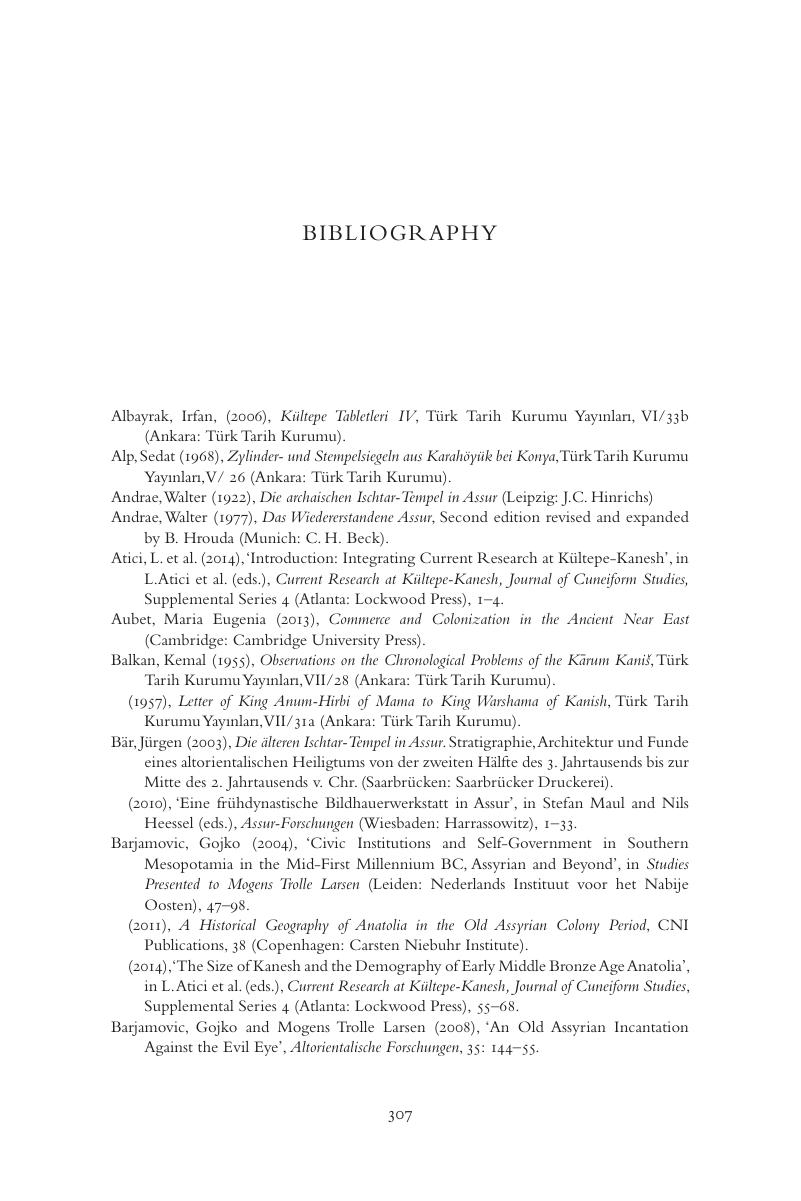Book contents
- Ancient Kanesh
- Dedication
- Ancient Kanesh
- Copyright page
- Contents
- Illustrations
- Preface
- Chronology
- 1 Introduction
- Part I Beginnings
- Part II The Home Town
- Part III Anatolia
- Part IV Economy and Society
- Part V Cultures
- Part VI Interpretations
- Appendix Families and Names
- Notes
- Bibliography
- Index of Old Assyrian Names
- Index of Old Assyrian Texts
- General Index
- References
Bibliography
Published online by Cambridge University Press: 05 October 2015
- Ancient Kanesh
- Dedication
- Ancient Kanesh
- Copyright page
- Contents
- Illustrations
- Preface
- Chronology
- 1 Introduction
- Part I Beginnings
- Part II The Home Town
- Part III Anatolia
- Part IV Economy and Society
- Part V Cultures
- Part VI Interpretations
- Appendix Families and Names
- Notes
- Bibliography
- Index of Old Assyrian Names
- Index of Old Assyrian Texts
- General Index
- References
Summary

Information
- Type
- Chapter
- Information
- Ancient KaneshA Merchant Colony in Bronze Age Anatolia, pp. 307 - 316Publisher: Cambridge University PressPrint publication year: 2015
